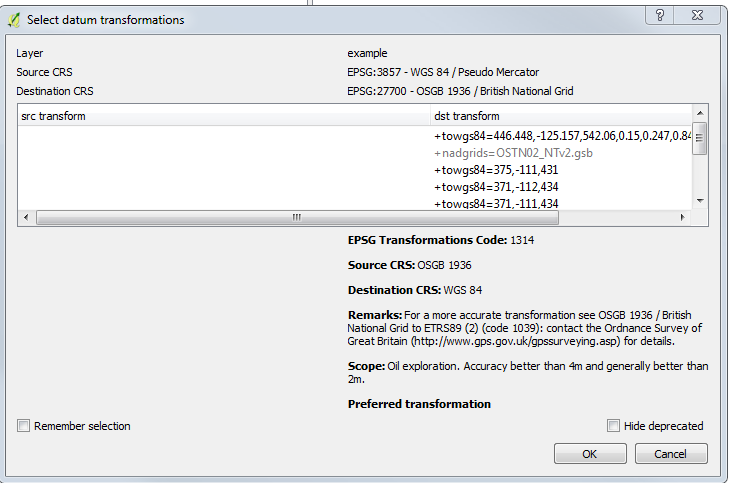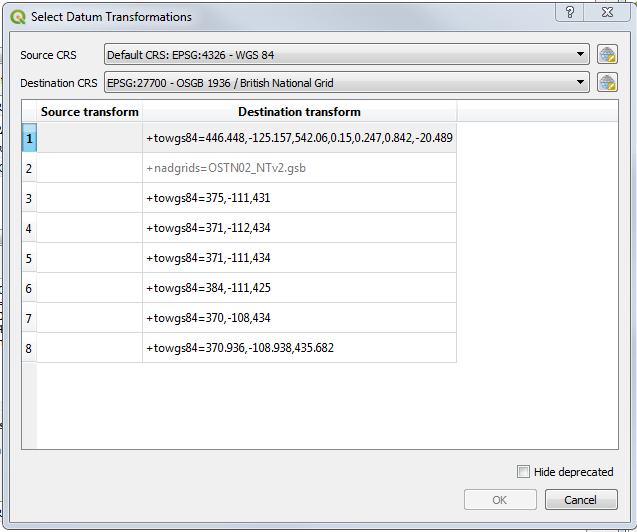Hi all,
I've done some data preparation of OpenStreetMap data (epsg:4326) in QGIS and as part of that work reprojected the OSM data to epsg:27700, naughtily relying on QGIS on the fly reprojection without too much thought. That defaults to a transformation that looks good in QGIS for my purposes and aligns well with the OSM web tiles in QGIS. I now want to use the 3DTiles in FME visualisation to export the data as a Cesium web map (thus going back from epsg 27700 to 4326) but I see a shift of about 1m or 2m of my OSM data when in Cesium (i.e. the product of the FME writer). I presume this is because FME is doing a different transformation to go back (appears to default to using OSTN15 grid shift) to that which I applied in QGIS.
The QGIS transformation appears to be named as EPSG:1314.
https://epsg.io/1314 so I thought I could transform the data with that to 4326, before sending to the 3DTiles writer. However, I can't find epsg:1314 as a transformation in the csMapReprojector in FME, and none of the available OSGB_to_WGS84 transforms give any better results.
So do I need to recreate the transformation parameters of 1314 myself? Or is there another approach. I find it surprising that FME does not have this transformation already so I am starting to wonder if I am either missing something obvious or my approach is flawed.






